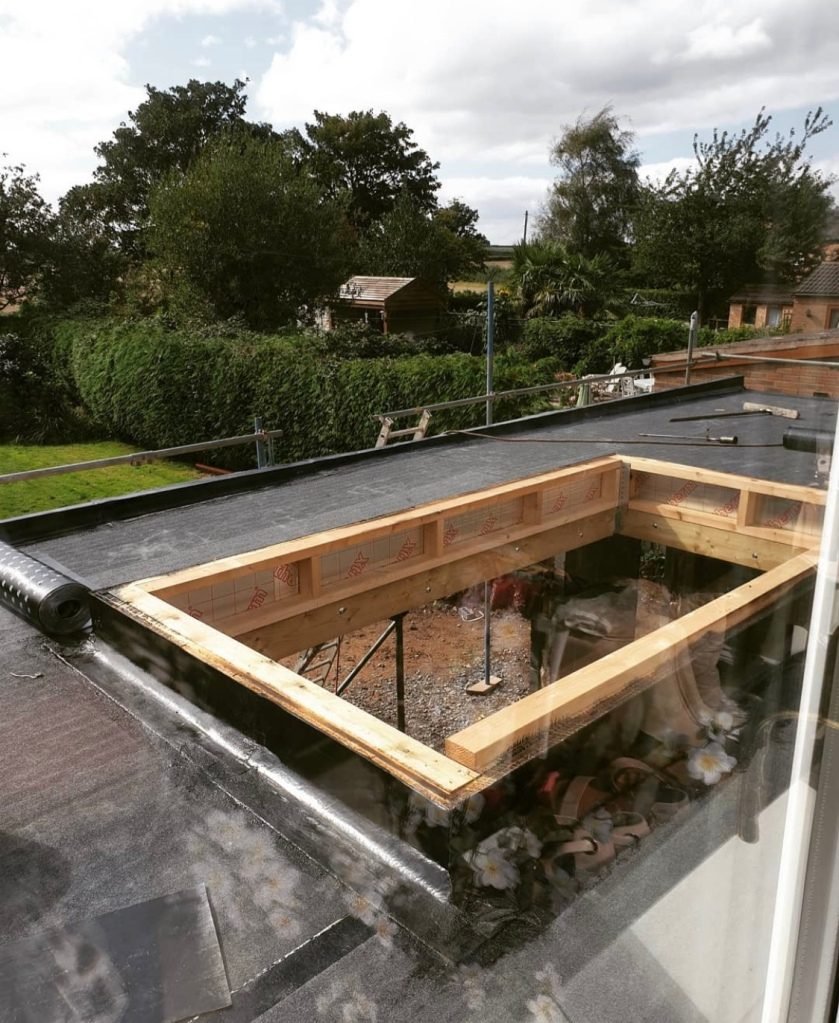Often now roofing felt is used on walls, the material provides a secure layer on your wall for protection just like it goes on your roof. It can protect your roof from water seeping through into your house which can cause leaking in your walls and ceiling and can rot the underlay too. However, the most asked question is using felt is worth your resources and is it better in the long run?
What is roofing felt?
Roofing felt is made up of seven different layers, each of these layers all have a base of natural or synthetic materials. They are usually made of wood, cellulose, fibreglass or polyester. It is then drenched with bitumen or another type of protective coating as resistance to water. Although the bitumen is made from asphalt it can keep water from penetrating felt fibres so the roofing is still breathable.

Why use roof felt?
Felt material is used by roofing contractors to protect structural decking, this is the wood that is covering your home’s rafters. This is placed at the top and bottom, to make sure it’s secure and to protect the decking from any damage that might be caused from water. It will also protect your house from water leakage and can make your roof look more appealing.
Helpful Attributes of Roof Felt
Water Repellant
Roof felt is known for its water-repellant capabilities, it is a great way to keep water off the roof by draining it off, stopping it from leaking into your home. Doing this can prevent moisture damage, rot, mould and leaks that may be caused from snow storms, strong winds or rainfall as it can damage the inside of your house.
Prevention of Damage from Melting Ice
When you live in cold environments ice or snow dams can build up on your roof, this happens because the heat from your house rises up to the roof which causes the ice or snow to melt. When this happens water can escape and seep down through the bricks and walls into your house causing leaking and water damage. The benefit of roofing felt can prevent this from happening.
Weather Protection
Shingles on your roof is one of the first defences on your house to prevent water leakage, but having shingles add extra protection to your house, If your shingles break off during any type of strong storm, the felt keeps the roof deck safe from water until the shingles are replaced to provide some protection for when they break.
Prevents Stains from Wood Resin
Certain types of wood can leach resin over time, when this happens this can stain your shingles or compromise them. However the wood acts as a layer of protection for the felt and shingles, and it can also protect it from water damage.
Using Roof Felt on External Walls
It’s quite common for builders to use roofing felt as a source of protection from water layers and it can also act as a wall sheathing and the wall covering. This allows a layer of protection from keeping moisture from escaping into your home and damaging the walls or ceilings. Felt can also help to prevent water from rotting the underlay materials that are behind your walls stopping them from being damaged.
To use roofing felt in exterior walls you need to apply the materials around the outside of the surfaces you are using. You can also install it to windows by adding roofing nails all around it, then you should apply sliding, veneer or brick this will help to keep it all together.
Felt Paper on Interior Walls
It is also very common to use roofing paper on the inside of your walls especially beneath the plaster. Although if you apply the plaster straight onto the wood it can cause the plaster on the wood to crack and become durable over time as the wood can expand and contract. However, felt roofing doesn’t crack or expand so it’s used to provide a protective layer acting on the wood as a slip plane so it doesn’t get damaged.
Another benefit of roof felt is it provides a water resistant layer by allowing water vapour to be absorbed by the plaster stopping it from leaking into the wood. The felt is separated from the plaster which allows it to absorb the water without the wood getting damaged and releasing the moisture without damaging the inner part of the wall structure keeping it stable and safe.
